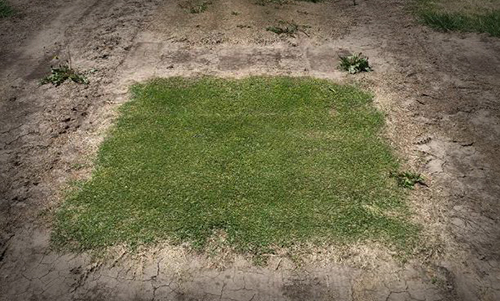The effort by the Texas A&M AgriLife Research Center at Dallas to breed freeze tolerant zoysigrass varieties is part of an ongoing project that began in 2003 alongside researchers at Kansas State University .
Zoysiagrass’ low input requirements, strong shade tolerance and salinity tolerance make it an attractive option for use across the U.S., but almost all varieties of this warm-season turfgrass species thrive exclusively in the southern U.S. due to low tolerance for freezing temperatures. As such, project researchers seek to breed new zoysia varieties that can survive the colder temperatures of the northern U.S.
The project aims to breed varieties with overall traits, including cold tolerance greater than those found in Meyer zoysiagrass, which was bred in the 1950s and remains the only commercially available cold tolerant variety.
The Dallas Center’s turf breeding program in 2004 produced 640 zoysia hybrids, which were sent to Kansas to be evaluated for cold tolerance. The breeding lines that survived the cold were evaluated for aesthetic quality and a range of other characteristics. The eventual result was the release of the hybrid KSUZ0802 in 2015 – a variety featuring finer texture than Meyer, equal cold tolerance, rich color and strong establishment capabilities.
Efforts of this breeding initiative have now shifted into a collaboration with the U.S. Golf Association to produce a variety that is both cold tolerant and large-patch-disease resistant. As such, researchers look to hybridize viable cold tolerant and patch resistance germplasms to breed a variety that will sustainably serve the needs of those sporting terrains into the future.
Contact Dr. Ambika Chandra for information
[email protected]

